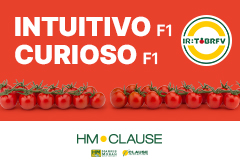The cooperative will incorporate another 10 to 15% of asparagus production this year. The segments showing most growth are preserved green and wild asparagus
In 2015/16 they exceeded their marketing expectations, going from the forecasted 5 million kilos to 6.5. And in this campaign the goal is to reach 7 million, since the production conditions are ideal, the weather has been perfect over the past months and quality is remarkable. This cooperative from Granada, Centro Sur (Cesurca), is always looking to the future, with a conservative spirit (they play it safe, backing sustained growth and the most traditional produce), but without forgetting necessary innovation. The most visible example of this is its produce range, with green asparagus as a reference for large volume. “It is the one that grows most, the others are complementary, with which customers can differentiate and obtain a better price: wild, white and purple”, the chairman of Cesurca, Antonio Francisco Zamora states. All of them have their market share and allow a customer to be reached who is looking for medium-high segment produce and that provides nuances of flavour and a touch of originality in the preparations. Such as the wild asparagus, a highly flavoured asparagus with great texture that end consumers still do not know how to distinguish from the fine calibre green asparagus. “It is an ongoing war, but their sales are growing little by little, mainly in Spain, Germany and Switzerland”.
At present, the company markets 100 tonnes under the PGI Espárrago de Huétor Tájar. The most curious fact is that, despite the lack of knowledge about this type as fresh produce, consumers do know how to distinguish preserved wild asparagus from common green asparagus, partly thanks to the acknowledgement obtained by its brand, Los Monteros. Therefore, during this campaign they foresee increasing sales in this segment by between 20-25%.
Cesurca guarantees produce availability throughout the year, both with its own production during the national campaign and in counterseason, with imports from Peru and Mexico.
Regarding its market share, they have an important presence in Germany, Switzerland, France and the Nordic countries, and they intend to continue growing in central and northern Europe, a challenge that they will surely reach in the short-medium term. Looking to the future, the main idea is to lengthen the campaign. Bringing the start forward and delaying the end. In order to do this they must operate in new regions (they are growing in Granada, Seville, Malaga, Cadiz and Jaen) and with new varieties (something more difficult to achieve; currently none of them convince the producers, who mainly remain true to Grande F1). Meanwhile they have opted for complementing their asparagus production with other produce that allows them to remain on the market for longer, such as pumpkins and artichokes. In this segment they expect to experience growth of around 50% in 2016/17.
























